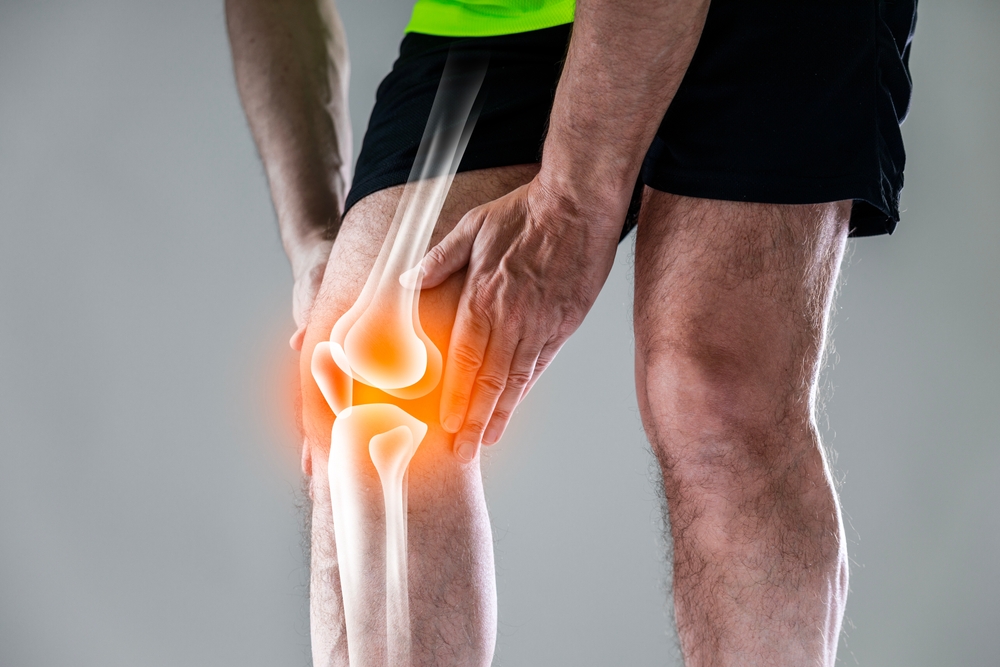Home
/
Symptoms
/
Limited Range of Motion and Knee Flexion – Causes, Diagnosis and Treatment Book Appointment
Limited Range of Motion and Knee Flexion – Causes, Diagnosis, and Treatment at Emirates Hospitals Group
A limited range of motion in the knee, particularly reduced knee flexion (the ability to bend the knee), can make it difficult to perform everyday activities such as walking, sitting, or climbing stairs. This condition can result from injury, degenerative diseases, or other medical conditions affecting the knee joint. At Emirates Hospitals Group, our orthopedic specialists provide comprehensive care for patients experiencing limited knee motion, helping restore knee function and reduce pain.
Causes of Limited Range of Motion and Knee Flexion
Several factors can lead to limited knee motion or knee flexion, including:
- Knee Injuries: Sprains, strains, or tears to the ligaments, tendons, or cartilage in the knee, such as anterior cruciate ligament (ACL) tears or meniscus injuries, can restrict knee motion.
- Osteoarthritis: A degenerative joint disease that causes the cartilage in the knee to break down, leading to stiffness, swelling, and limited knee mobility.
- Rheumatoid Arthritis: An autoimmune condition that causes inflammation in the knee joint, resulting in pain, swelling, and decreased knee flexion.
- Patellofemoral Pain Syndrome: Pain in the kneecap area that can limit knee flexion, especially when bending the knee or climbing stairs.
- Knee Bursitis: Inflammation of the bursa (fluid-filled sac) in the knee, often caused by repetitive movements or overuse, can lead to swelling and stiffness, limiting knee mobility.
- Scar Tissue Formation: After knee surgery or injury, scar tissue can form around the joint, leading to knee stiffness and restricted movement.
- Post-Surgical Complications: After knee surgery, such as a total knee replacement, limited range of motion may occur as the knee heals.
- Infection or Inflammatory Conditions: Infections or conditions like gout can cause joint swelling and limited range of motion in the knee.
Symptoms of Limited Range of Motion and Knee Flexion
The symptoms associated with limited knee motion or flexion may include:
- Difficulty bending or straightening the knee.
- Pain, especially during movement or activity.
- Swelling or inflammation around the knee joint.
- Stiffness or tightness in the knee, particularly after periods of rest.
- A feeling of the knee “locking” or “catching” during movement.
- Weakness in the knee or a feeling of instability.
Diagnosis of Limited Range of Motion and Knee Flexion
To accurately diagnose the cause of limited knee motion, a healthcare professional will perform a thorough examination. Diagnostic methods may include:
- Physical Examination: A detailed examination to assess the knee’s range of motion, strength, and areas of tenderness.
- Medical History: A review of previous injuries, surgeries, or medical conditions that may affect knee movement.
- X-rays: Imaging to evaluate bone structure and check for signs of arthritis, fractures, or joint degeneration.
- MRI or Ultrasound: These imaging techniques provide detailed views of soft tissues such as ligaments, tendons, and cartilage, helping to identify tears, inflammation, or other issues.
- Arthroscopy: A minimally invasive procedure used to visualize the inside of the knee joint and diagnose cartilage damage, arthritis, or other structural issues.
- Blood Tests: To check for markers of infection or inflammatory conditions that may contribute to knee stiffness.
Treatment for Limited Range of Motion and Knee Flexion in Dubai
At Emirates Hospitals Group, our orthopedic specialists are dedicated to diagnosing and treating limited range of motion and knee flexion, providing a personalized treatment plan that restores mobility and alleviates pain.
Treatment for limited knee motion depends on the underlying cause and severity of the condition. Common treatments may include:
- Physical Therapy: A program of stretching and strengthening exercises to improve flexibility, strength, and range of motion in the knee.
- Medications: Nonsteroidal anti-inflammatory drugs (NSAIDs) to relieve pain and inflammation. Corticosteroid injections may also be used to treat severe inflammation.
- Rest and Ice: Applying ice and resting the knee to reduce swelling and pain, particularly after activity or injury.
- Heat Therapy: Heat can be used to relax the muscles around the knee and improve flexibility.
- Knee Bracing: A knee brace may provide support and stability to the joint while protecting it from further strain.
- Surgical Intervention: In cases of severe injury or degenerative conditions, surgery may be necessary. Procedures can include arthroscopy to remove damaged tissue, ligament repair, or knee replacement surgery.
- Injections: Hyaluronic acid injections may be used to lubricate the joint, while platelet-rich plasma (PRP) injections can stimulate healing and reduce inflammation.
- Lifestyle Modifications: Maintaining a healthy weight, proper posture, and avoiding excessive strain on the knee can help prevent further damage and promote healing.
Related Treatments



